In July 2012, the Food and Drug Administration (FDA) finally banned the use of BPA in baby bottles and children's drinking cups. Good news, to be sure, but why must we wait to have this likely carcinogen eliminated from our dietary supply entirely?
BPA, or bisphenol-A, is a weak estrogen, and is classified as an endocrine disruptor because it alters the body's hormones. You didn't hear much about it until about four years ago, when governments and scientists began questioning its safety. Actually, BPA has been around for more than 100 years. Discovered in 1891 by a Russian chemist, it was used in the 1930s as an artificial estrogen to stimulate the growth of cattle and poultry, and then as an estrogen replacement for women. BPA was replaced by the now-infamous diethylstilbestrol, DES. Today, BPA has infiltrated our food and water supply.
We now know that hormone replacement therapy using estrogen increases the risk of endometrial and ovarian cancer, as well as breast cancer. BPA has been linked to breast cancer, prostate cancer, and also significant abnormalities of ovaries, uterus, and vagina in mice. BPA causes harmful effects on sperm fertility and other reproductive functions in rodents. In humans, BPA exposure has been associated with an increased risk of miscarriage and polycystic ovary disease. It is thought to alter the development of hormones in children and adolescents.
Yet, last spring the FDA declined the Natural Resource Defense Council's petition to ban BPA from food containers. It is still used in the epoxy lining of cans used to package food and beverages that children and adults consume on a daily basis, including, ironically, infant formula. Although you now see water bottles and reusable food storage containers sporting prominent "BPA-free" claims, it is still used in the lining of drinking water pipes and packaged food containers. BPA is also a major component of the coating on cash register receipts and is both absorbed through the skin and transferred from our fingers to food to our mouths.
The FDA cites "insufficient evidence," and it is true that the evidence for carcinogenicity in humans is limited. It's challenging to conduct studies of carcinogenic chemicals on humans, because it would be unethical to knowingly expose humans to high levels of potential toxins. Because BPA is found in the urine of over 90 percent of all humans studied, there is no control group for a scientific study.
Many researchers still plead for action. "Sometimes you just have to make decisions based on 'inadequate' evidence. You just [make them] based on the right thing to do," said Robert H. Lustig, M.D. of the University of California San Francisco, who studies the effects on humans of various chemicals found in the environment. Even within our government, not every entity agrees with the FDA's position. For example, the 2008-2009 Annual Report of the President's Cancer Panel warned that BPA, and the large variety of other chemicals in our midst, could be contributing to our risk of cancer. Currently, the National Institutes of Health is studying the effects in offspring of pregnant females exposed to BPA and other endocrine disruptors (so called "transgenerational" effects).
According to the National Institute of Environmental Health Sciences, a division of the National Institutes of Health, "Evidence from animal studies indicates BPA may cause adverse effects such as obesity, behavioral changes, diabetes, early onset puberty, asthma, cardiovascular diseases, reproductive disorders, development of prostate, breast and uterine cancer, and transgenerational or epigenetic effects."
Shouldn't the burden of proof lie with the manufacturers of BPA to prove that it is safe for use in humans? Perhaps the answer lies in the "bottom line:" BPA has an estimated value of $6 billion annually. To put profit ahead of public health, however, is unacceptable. If there is even a possibility that BPA may be disrupting the endocrine systems of children, adolescents, and adults, and may be carcinogenic for humans as it is for mice, it should be removed from consumer products.
There are only a few examples of industry initiating change. Eden Organic Foods has been leading the BPA-free effort for years, with a policy in place since 1999. In 2011, General Mills promised to begin using BPA-free packaging with canned tomato products sold by Muir Glen, an organic foods subsidiary of General Mills. Hunt's plain tomato products are now BPA-free.
While maintaining that it considers BPA in its cans to be safe, the Campbell Soup Company announced in March, 2012 that it will begin using alternatives to BPA. While these are positive first steps to reduce the risk of cancer and other illnesses due to BPA, that effort should be more widespread and immediate -- and should involve the entire canned food industry.
Americans expect the FDA to be a good steward of public health. Until the FDA steps up to its responsibility in this case, it is up to us to take action. We, as consumers, must be vigilant about choosing products that at the very least will not harm us. "Buyer beware" is as true today as it was many years ago, before the age of government regulation.
For more by Margaret I. Cuomo, M.D., click here.
For more healthy living health news, click here.